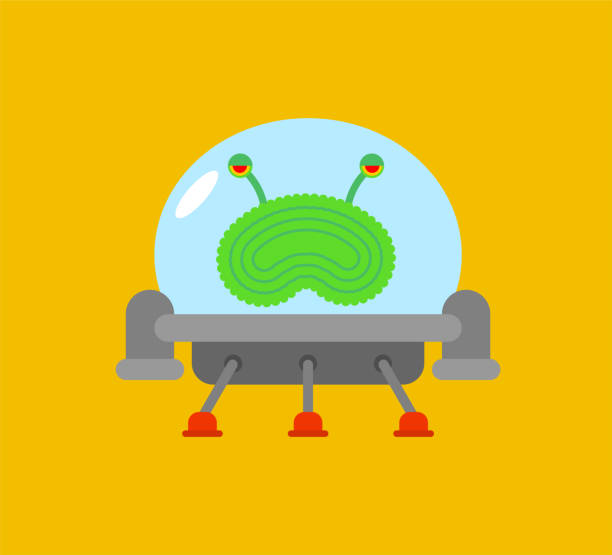
A famous hoax
Anyone in their mid-40s or older might just remember media coverage of a strange phenomenon that appeared in the 1980s in fields in the south of England. “Crop circles” were large, complex circular patterns of flattened corn, often found close to ancient sites such as Stonehenge. A substantial number of people believed these were due to the actions of alien spacecraft. Some years later two pranksters admitted the whole thing was their work, a hoax. What has any of this got to do with epilepsy? Mysterious molecular circles have now been discovered in the brain where epilepsy begins. These are no hoax.
Round and round in circles – a new form of RNA controlling gene activity
In 2013, researchers announced in the scientific magazine Nature the discovery of a new form of ribonucleic acid (RNA). RNA is the chemical cousin of DNA. When the DNA code is “read” a strand of RNA is produced. What was strange was that this RNA was in the form of a circle. At the time, several different forms of RNA were known. The best understood was messenger RNA (mRNA) which carries the information (“message”) from DNA to make a protein. To be read, one end of the mRNA has to be free to thread through a molecular machine in the cell called a ribosome. As it does so, a series of amino acid ‘building blocks’ are assembled like a chain to become the protein. This is called translation. Cells make several other types of RNA which help keep the process working as it should. One of these is microRNA (a favourite of my own laboratory). MicroRNA are much shorter stretches of RNA which stick onto mRNAs, a bit like patches of Velcro. This jams-up the translation process preventing the manufacture of proteins. MicroRNAs are basically the brakes on protein production. The team, led by Jørgen Kjems from Denmark, found that a series of molecular cut-and-paste events inside cells was producing circles of RNA. Because these had no beginning or end, the circular RNAs couldn’t be read by the ribosome. They didn’t make proteins. What were they for?
My enemy’s enemy is my friend
The Danish team noticed that the most abundant of the RNA circles contained a repeating sequence. RNA is made of four different types of bases, similar to DNA; these are represented by the letters A, C, G and U. When they decoded the sequence they found that it was a perfect complement to a microRNA (the rules of engagement here are that the A base in one RNA will bind to a U base in another RNA, a C base will bind to a G. The sequence “ACGU” will stick to a “UGCA”). They realised that the circular RNAs were probably behaving like a microRNA “sponge”: tying up the microRNA so it could no longer stick onto the mRNAs and therefore protein production would resume. They had discovered a way to cut the brakes. Circular RNAs were being used by cells as a counterbalance to keep microRNAs in check. If you are a mRNA then your job is to produce proteins. MicroRNAs stop you doing this. So, as the saying goes, “my enemy’s enemy is my friend”. RNA circles turn out to be the protector of mRNA and the proteins they produce.
Circular RNAs take centre stage just as epilepsy begins
An exciting new study published by a team led by R Jeroen Pasterkamp at Utrecht, clinical colleagues in Germany as well as the original Danish team, has looked at what happens to circular RNAs during the development of epilepsy. What they found was unexpected. Levels of circular RNAs change dramatically just as the brain begins to generate seizures.
To study circular RNAs the team turned to an experimental model in which epilepsy had been produced in rats by carefully stimulating part of the brain with an electrical current. In this model, epilepsy (spontaneous seizures) emerge a few weeks after the stimulation. This provides a number of “windows” into the process as it develops, covering early, mid and late time points, the day of first seizure as well as a time long after that when epilepsy is habitual. To look for circular RNA, the team sifted through millions of RNA sequences from brain samples at these five time points. They used a computer programme to look for the exact features of RNA that favour circle formation and then confirmed the circles by a clever experiment. The trick was to mix their RNA with an RNA-degrading enzyme. Since circular RNAs have no ends the enzyme can’t find a place to “latch on”. Levels of circular RNA remain the same whereas other forms of RNA are quickly degraded. The team identified thousands of different circular RNAs in the samples and, confirming what the Danish team had noticed before, many were highly abundant in the brain.
But the bigger surprise was coming next. Levels of circular RNAs remained quite stable in 4 out of the 5 time points. However, in one of the samples they detected a huge spike in the amount of circular RNAs. The sample corresponded to the day of the first epileptic seizure. This was very exciting. While we understand quite a lot about the molecular changes in the brain at some of the other time points, we know very little about the final transition event from “not yet epileptic” to “now there is epilepsy”. Circular RNAs were undergoing profound changes precisely at the time the brain begins generating spontaneous seizures. If a molecular signal exists at this transition point it could be important for overseeing final and perhaps irreversible changes in the brain. Moreover, it could be a way to identify patients at immediate risk of epilepsy. It could also be a rich source of therapeutic targets, a way to interrupt processes just before epilepsy becomes “settled”.
The researchers looked at the sequences of the circular RNAs that were changing and found tell-tale matches to microRNAs. Two of the microRNAs predicted to be bound by the circular RNAs were known to control the function of excitable cells in the brain (neurons) and the immune response to brain injury. Both processes are critical in epilepsy. They concluded that circular RNAs interfere with these microRNAs and change signalling patterns in the brain. This allows certain proteins to be made that would otherwise have been blocked by the microRNAs.
Where next?
What the findings don’t tell us is whether the circular RNAs are driving the transition to epilepsy or trying to prevent it. If either is true, manipulating RNA circles could be a way to treat epilepsy. It is already possible to design drugs against most RNAs using a technique called antisense. This is an artificial form of RNA that sticks on and blocks an RNA from working. RNA drugs such as antisense are already in clinical use to treat a number of rare neuromuscular diseases (and of course some of the recent COVID-19 vaccines use RNA to trigger immunity). The same technology can be used to block circular RNAs. Since other teams have recently detected circular RNAs in human epilepsy, this has all the signs of being an exciting breakthrough in our understanding of the way gene activity shapes the development and maintenance of epilepsy.
‘Enrichment of Circular RNA Expression Deregulation at the Transition to Recurrent Spontaneous Seizures in Experimental Temporal Lobe Epilepsy‘ was published in Frontiers in Genetics in February 2021.
About the author

David is an Anglo-Irish neuroscientist who lives and works in Dublin. He studied Pharmacology for his undergraduate and PhD studies then moved to the USA where he spent six years between Pittsburgh and Portland. He came to RCSI in 2004 where he is currently Professor of Molecular Physiology and Neuroscience and the Director of the FutureNeuro Research Centre. His team are interested in the causes, diagnosis and treatment of epilepsy and neurodevelopmental disorders. In his free time, David enjoys running, reading, vegan cooking and as much time as possible with his family.



Exϲellent aгticle. I definitely love this website. Continuе the good work!